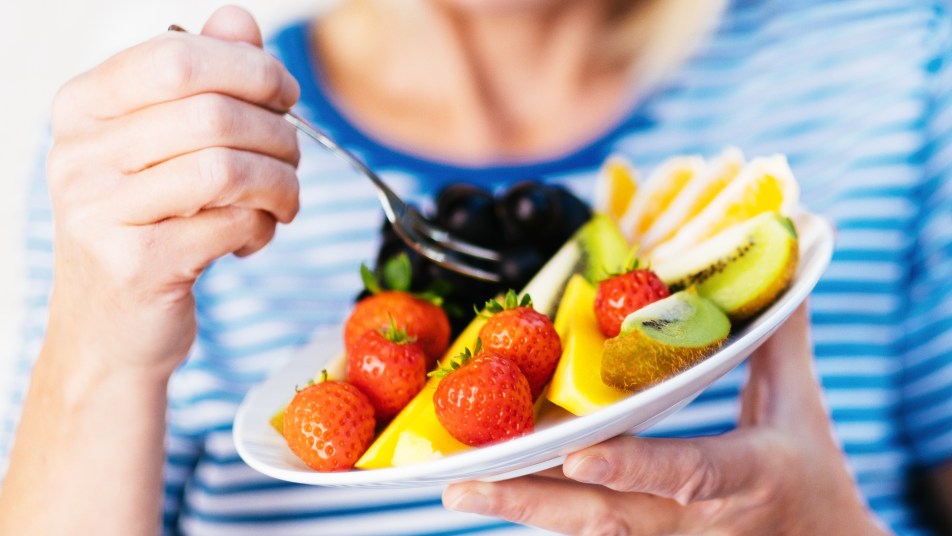Eating Fruits, Veggies, and Dairy at These Specific Times Can Reduce Heart Disease and Mortality Risk

As we get older, many of us are doing our best to keep a clean and healthy diet, but what we’re now learning is that when you eat certain items might be just as important as what you eat during the course of a given day when it comes to longevity. In fact, findings from a new study suggest that planning your meals in a very specific way, and only snacking on certain things, can significantly reduce your risk of cardiovascular disease (CVD) and all cause mortality.
Starchy Snacks and Heart Health
According to new research published in the Journal of the American Heart Association, eating starchy snacks high in white potato or other starches (like potato chips, crackers, and pretzels) after any meal was associated with an increased risk of CVD-related death and all-cause mortality. In contrast, it was also shown that people who specifically ate a fruit-based lunch, veggies with dinner, and a dairy snack in the evening actually decreased these risks significantly.
The researchers used results from the National Health and Nutrition Examination Survey (NHANES) from 2003 to 2014 to analyze the dietary patterns of 21,503 participants aged 30 and older. The team also used the U.S. Centers for Disease Control and Prevention’s National Death Index to find out which participants died through December 31, 2015, due to CVD, cancer, or any other cause.
The subjects were categorized by what types of food they ate at each meal. They described some meals as “fruit-based” or “vegetable-based” to signify that fruit or vegetables were the main portion of the meal, though other food groups were consumed. Morning meals were divided into three categories: western breakfast (“western” in this case described a meal high in refined grains, cheese, and/or cured meats), starchy breakfast, and fruit-based breakfast. Mid-day meals were similarly divided into the categories: western lunch, vegetable-based lunch, and fruit-based lunch. Dinner was also divided into western dinner, vegetable-based dinner, and fruit-based dinner.
The researchers also grouped subjects based on snacks they ate between meals. Categories for snacks included grain snack, starchy snack, fruit snack, and dairy snack. Subjects who didn’t fit a specific meal pattern were used as a reference group.
Based on their data, the researchers were able to determine that eating a western lunch was associated with a 44 percent increased risk of CVD-related death, while eating mostly fruit for lunch decreased the risk of CVD by 34 percent. Eating mostly veggies at dinner reduced the risk of CVD by 23 percent and all-cause mortality by 31 percent. But eating snacks high in starch at any time of the day was associated with a whopping 44 to 57 percent increased risk of CVD-related death and a 50 to 52 percent increased risk of all-cause mortality. Finally, and perhaps most excitingly, those who reported consuming a dairy snack after dinner also had reduced risk of dying from any cause. Ice cream, anyone?
“Our results revealed that the amount and the intake time of various types of foods are equally critical for maintaining optimal health,” said Ying Li, Ph.D., lead author of the study. “Future nutrition guidelines and interventional strategies could integrate optimal consumption times for foods across the day.” As for why these food combinations seem to work the best, the researchers haven’t yet determined.
So if you’re trying to eat for good heart and overall health, remember that eating certain types of food at the right times could quite literally add years to your life. And, as the research suggests, it’s probably best to steer clear of snacks that contain high amounts of starches like potato chips, crackers, and pretzels. For some inspiration, check out our favorite anti-aging snacks packed with nutrients that will nourish you for years to come.












